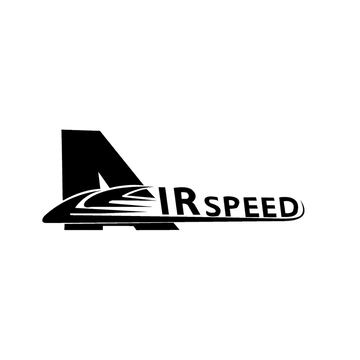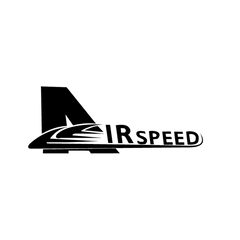The Evolution and Benefits of Carbon Fiber in Automotive Interiors
Posted by SUPPORTAIRSPEED

The History and Development of Carbon Fiber
Origins of Carbon Fiber Carbon fiber's journey began in the mid-20th century when it was first developed for use in aerospace applications. The material was initially created by heating rayon or polyacrylonitrile fibers to high temperatures, resulting in carbonization. The resulting fibers were incredibly strong and lightweight, making them ideal for high-performance uses.
Technological Advancements Over the years, advancements in manufacturing processes have significantly improved the quality and affordability of carbon fiber. Early carbon fibers had limited applications due to their high cost and complex production methods. However, innovations in polymer chemistry and manufacturing techniques have made carbon fiber more accessible for various industries, including automotive, sports equipment, and consumer electronics.
Carbon Fiber in the Automotive Industry Carbon fiber's introduction to the automotive industry marked a significant milestone. Initially used in high-end racing cars and luxury vehicles, carbon fiber components demonstrated substantial performance benefits. As production costs decreased, carbon fiber began to appear in more mainstream vehicles, offering both aesthetic and functional advantages.
Properties of Carbon Fiber
Material Science of Carbon Fiber Carbon fiber is composed of thin, strong crystalline filaments of carbon atoms aligned in a regular pattern. This unique structure gives carbon fiber its remarkable properties. Typically, these fibers are woven into fabrics and combined with resin to form a composite material.
Key Properties of Carbon Fiber
- Lightweight: Carbon fiber is known for its lightweight nature, significantly lighter than steel and aluminum. This property makes it ideal for applications where reducing weight is crucial.
- High Strength: Despite its light weight, carbon fiber boasts exceptional tensile strength, making it highly durable and resistant to damage.
- Aesthetic Appeal: The distinctive weave pattern and glossy finish of carbon fiber provide a high-tech, luxurious look that enhances the visual appeal of any application.
- Corrosion Resistance: Unlike metals, carbon fiber does not rust or corrode, ensuring longevity and durability in various environmental conditions.
Benefits of Carbon Fiber Overlay Accessories
Aesthetic Appeal Carbon fiber overlay accessories significantly enhance the interior aesthetics of a vehicle. The unique texture and finish of carbon fiber provide a modern, sporty, and high-end appearance that is unmatched by other materials. These overlays can transform the look of dashboards, center consoles, door handles, and other interior components.
Protection In addition to their visual appeal, carbon fiber overlays offer protective benefits. By covering existing parts, these accessories protect the original surfaces from scratches, scuffs, and other damage. This helps maintain the pristine condition of the vehicle's interior, preserving its value over time.
Easy Installation One of the primary advantages of carbon fiber overlay accessories is their ease of installation. Designed to be applied over existing parts using adhesive, these components allow for a quick and straightforward upgrade. This makes it possible for car owners to enhance their vehicle's interior without the need for extensive modifications or professional installation.
Applications of Carbon Fiber in Automotive Interiors
High-Performance Racing Cars Carbon fiber was first introduced to the automotive industry through high-performance racing cars. Its lightweight nature and high strength made it the perfect material for reducing weight and improving speed and handling. Components such as seats, dashboards, and body panels were among the first to be made from carbon fiber.
Luxury and Sports Cars As production techniques improved and costs decreased, carbon fiber began to appear in luxury and sports cars. These vehicles utilized carbon fiber for both exterior and interior components, enhancing performance and providing a premium look. Today, carbon fiber is a staple in the design of high-end vehicles.
Mainstream Applications More recently, carbon fiber has made its way into mainstream vehicles. While not as prevalent as in high-end models, carbon fiber components are becoming more common in mass-produced cars. These applications focus primarily on aesthetic enhancements and protective overlays, allowing everyday car owners to enjoy the benefits of carbon fiber.
Carbon Fiber Overlay Accessories Overlay accessories are among the most popular carbon fiber applications in automotive interiors. These accessories include dashboard trims, steering wheel covers, shift button covers, door handle covers, and center console covers. Designed for easy installation, they provide an affordable way to achieve the look and feel of carbon fiber without the need for custom parts.
Conclusion
The evolution of carbon fiber from aerospace to automotive applications highlights its versatility and value. With its unique combination of strength, lightweight properties, and aesthetic appeal, carbon fiber has become a sought-after material for automotive interiors. Overlay accessories, in particular, offer a practical and stylish way to enhance the look of your vehicle while providing protection for original parts. As carbon fiber technology continues to advance, its presence in the automotive industry is set to grow, offering even more exciting possibilities for car enthusiasts.
TAGS:


